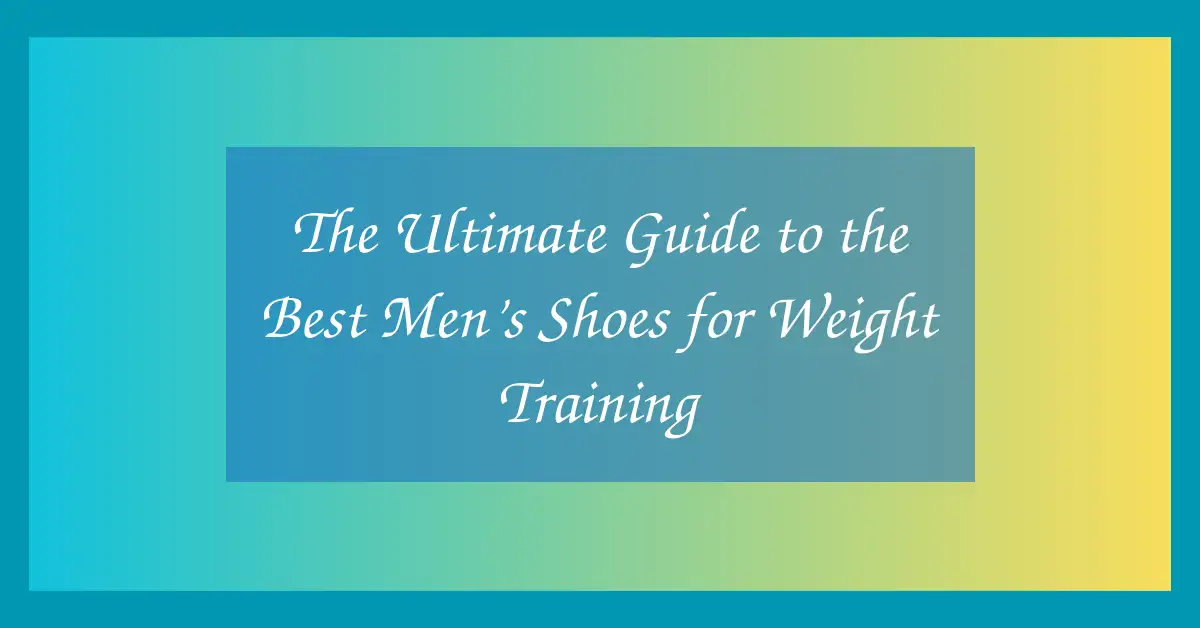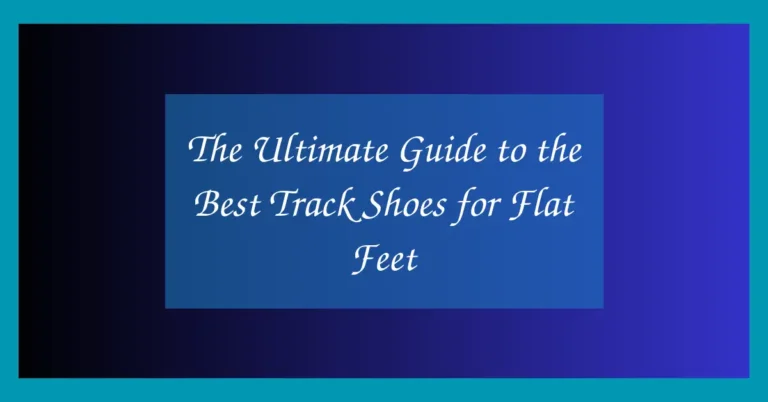The Ultimate Guide to the Best Men’s Shoes for Weight Training
Choosing the right shoes for weight training is crucial for both safety and optimal performance in the gym. The right footwear provides the necessary support and stability needed when engaging in heavy lifting or dynamic movements, thereby reducing the risk of injuries. Moreover, appropriate shoes enhance the effectiveness of your workout by allowing proper form and power transfer during exercises like squats, deadlifts, and presses.
With a myriad of options available, it can be overwhelming to decide which pair best suits your training needs. This article aims to simplify that choice by guiding you through the essential features to look for in men’s weight training shoes, ensuring that you make an informed decision that will contribute positively to your fitness journey.
Top 10 Shoe Reviews for Men’s Weight Training
1. Nike Metcon 7
The Nike Metcon 7 stands out as a premier choice for weight training enthusiasts. Renowned for its robustness and versatility, this iteration of the Metcon series has been enhanced to offer greater stability and comfort. The shoe features a wide, flat heel with an inner plate that distributes weight from edge to edge, providing a stable base for heavy lifts. It’s also flexible enough for sprints and agility drills, thanks to the React foam in the midsole, which offers responsive cushioning.
The Metcon 7 includes a lightweight mesh upper that ensures breathability while maintaining durability. The rubber wraps up the arch for added grip during rope climbs, and the heel clip helps reduce drag during wall exercises. It’s an ideal all-rounder that can handle any workout you throw at it, from heavy lifting sessions to high-intensity interval training.
Each aspect of the design has been thoughtfully engineered to support weight training demands. The shoe’s lace-up closure is secured with a Velcro strap to ensure a locked-in fit, reducing in-shoe movement. The updated rubber tread offers superior traction on gym floors, making it safer and more effective for dynamic movements.
-
Pros:
-
Exceptional stability for heavy lifting
-
Versatile for various workouts
-
Durable construction with breathable mesh upper
-
Enhanced grip features for functional fitness
-
Secure fit with Velcro strap closure
-
-
Cons:
-
Higher price point compared to some competitors
-
May be too rigid for those who prefer more cushioning
-
Limited color options available
-
2. Reebok Nano X2
Reebok’s Nano series has long been a favorite among weight trainers, and the Nano X2 continues this tradition with significant improvements. Designed as a training shoe that can do it all, it features a durable Flexweave knit upper that provides breathability and stability. The comfort factor is elevated with a soft foam midsole, which is responsive yet firm enough to support weight-bearing exercises.
The outsole of the Nano X2 is designed with a lug pattern that offers excellent grip on a variety of surfaces, making it a great choice for those who mix their workouts between indoor and outdoor settings. The shoe’s wide toe box allows for natural foot spread during lifts, which is essential for proper lifting form and balance.
This shoe is particularly noted for its all-day wearability, which makes it suitable not just for the gym but for casual wear as well. The heel counter is updated to better lock in the foot, providing stability during lateral movements. The Reebok Nano X2 is a well-rounded shoe that supports the dynamic range of movements required in modern weight training routines.
-
Pros:
-
Highly durable and versatile
-
Wide toe box for comfort during lifts
-
Effective grip on diverse surfaces
-
Suitable for all-day wear
-
Responsive yet firm cushioning
-
-
Cons:
-
Some users report it runs slightly large
-
Styling may not appeal to all users
-
Initial break-in period required
-
3. Adidas Powerlift 4
Adidas Powerlift 4 is specifically designed for weightlifters. It features a high-density, die-cut midsole wedge that ensures stability during squats, deadlifts, and other heavy lifts. The canvas upper is lightweight and durable, with an open forefoot and flexible toe design for enhanced comfort.
The Velcro strap across the laces ensures a secure fit, locking the foot in place to minimize internal movement. The raised heel (0.6 inches) is optimal for weightlifting as it helps maintain a better posture and can improve the depth of squats by allowing a greater range of motion at the ankle.
The Powerlift 4 is particularly noted for its excellent price-to-performance ratio, making it an accessible option for beginner and intermediate weightlifters. The sole is made of anti-slip rubber, which provides solid traction on gym floors. This shoe is a must-try for serious weightlifters looking for a budget-friendly option that delivers solid performance.
-
Pros:
-
High stability and support for weightlifting
-
Affordable price point
-
Secure Velcro strap for a snug fit
-
Lightweight and durable canvas upper
-
Raised heel design for improved lifting posture
-
-
Cons:
-
Not as versatile for other types of workouts
-
Limited cushioning and flexibility
-
Aesthetic may not suit all tastes
-
4. Under Armour TriBase Reign 3
Under Armour’s TriBase Reign 3 is tailored for functional fitness and weight training. It features a low, stable base with UA’s TriBase technology, which maximizes ground contact and enhances upward flexibility to grip the floor better during lifts. The upper is made of durable mesh, and overlays are strategically placed to add support and abrasion resistance without compromising flexibility.
The shoe includes a full-length Micro G foam midsole for a perfect balance between cushioning and responsiveness. The outsole design features strategic rubber build-ups for increased traction and durability in high-impact zones. The heel counter is also externally reinforced, providing additional support without excess weight.
The TriBase Reign 3 excels in workouts that require a lot of movement, from box jumps to sprints, making it a favorite among cross-trainers. Its low-profile design helps maintain a closer connection to the ground, which is ideal for maintaining stability during complex lifts.
-
Pros:
-
Superior ground contact and grip
-
Durable mesh and overlay construction
-
Responsive cushioning with Micro G foam
-
Reinforced traction in high-impact zones
-
Lightweight and supportive for diverse workouts
-
-
Cons:
-
Not the best for long-distance running
-
Fit may be tight for wider feet
-
Some users may prefer more arch support
-
5. Inov-8 F-Lite 235 V3
Inov-8’s F-Lite 235 V3 is a minimalist shoe that’s built for versatility in the gym. It’s highly acclaimed for its flexibility and ground feel, which is vital for weight trainers who prefer a natural movement during workouts. The shoe boasts a durable yet lightweight design, featuring a protective toe cap and a rope-tec grip that excels during rope climbs and descents.
The outsole is constructed with sticky rubber that provides outstanding grip and stability on all surfaces, indoors and out. The F-Lite 235 V3 is particularly lightweight, enhancing agility and speed without sacrificing protection or durability. The shoe’s flexibility makes it perfect for plyometrics, agility drills, and lifting, offering an almost barefoot experience.
This shoe is ideal for athletes who prefer a minimalist approach but still require adequate support and protection. The zero drop from heel to toe encourages a natural posture during workouts, which can help in reducing the risk of injury.
-
Pros:
-
Exceptional flexibility and ground feel
-
Lightweight and agile for varied exercises
-
Strong grip with sticky rubber outsole
-
Durable construction with protective features
-
Zero drop for a natural stance
-
-
Cons:
-
Minimalist design may not suit heavy lifters
-
Less cushioning than other models
-
Some users may need time to adapt to the barefoot feel
-
6. Nike Romaleos 4
The Nike Romaleos 4 is a powerhouse among weightlifting shoes, engineered specifically for strength training. It boasts a supportive design with a wide, flat outsole and a rigid midsole, ideal for providing the necessary stability during heavy lifts. The shoe features an adjustable dual-strap system, which allows for a customizable and secure fit, essential for maintaining proper foot alignment.
The upper is constructed from a durable synthetic material, ensuring longevity and resilience against the strains of weightlifting. The solid base not only enhances performance but also increases safety by minimizing the risk of slips or instability. This shoe is especially suited for athletes who focus primarily on Olympic lifts and seek maximum support and lockdown during their training sessions.
Internally, the Romaleos 4 is designed to offer a snug, comfortable fit with enough room in the toe box to prevent cramping. Its raised heel is specifically tailored to improve squat positioning, which can enhance lifting technique and reduce strain on the lower back.
-
Pros:
-
Exceptionally stable for heavy lifting
-
Durable synthetic construction
-
Adjustable dual-strap system for a secure fit
-
Supportive design tailored for Olympic lifting
-
Enhanced safety features to prevent slips
-
-
Cons:
-
Quite rigid, not suitable for varied workouts
-
Higher price point
-
May feel overly heavy for some users
-
7. Asics Lift Master Lite
Asics Lift Master Lite is renowned for its superb combination of stability and lightweight design, making it an excellent choice for weight trainers who appreciate versatility. The shoe features a seamless upper construction, which reduces the potential for irritation during workouts and provides a smooth, comfortable fit.
Its solid, flat rubber sole is designed to maximize ground contact and support, essential for effective power transfer during lifts. The Lift Master Lite includes Asics’ proprietary midsole material that delivers responsiveness while maintaining the necessary firmness for lifting. The ventilated mesh allows for excellent breathability, keeping the feet cool under pressure.
This model is distinguished by its wide stance and elevated heel, which help maintain proper posture during squats and deadlifts. It’s particularly suitable for athletes who need a reliable transition from heavy lifting to lighter, more agile movements.
-
Pros:
-
Lightweight yet stable design
-
Seamless upper for enhanced comfort
-
Excellent breathability
-
Versatile for transitions in workout types
-
Reliable grip and ground contact
-
-
Cons:
-
Some may find the heel too elevated
-
Limited color options
-
Slightly narrower fit compared to competitors
-
8. New Balance Minimus Prevail
The New Balance Minimus Prevail excels as a cross-training shoe that is perfectly suited for weight training due to its minimalist design and excellent support. It features a Vibram® outsole, which provides superior traction and durability, making it ideal for a variety of gym activities.
The upper is made from a knit fabric combined with TPU fibers, adding to its durability and providing a secure fit. The shoe’s low-drop design helps in maintaining a more natural foot position, which can be beneficial for balance and power distribution during exercises. The Minimus Prevail also offers a Revlite midsole, which provides lightweight cushioning without compromising the stability needed for lifting.
Its overall construction is geared towards enhancing the proprioception, allowing athletes to feel more connected to the ground, which is crucial for effective lifting techniques.
-
Pros:
-
Durable Vibram® outsole for excellent traction
-
Lightweight and supportive knit upper
-
Low-drop for natural foot positioning
-
Versatile for various gym activities
-
Enhances ground connectivity for better performance
-
-
Cons:
-
Less cushioning might not suit all users
-
Minimalist style may require adaptation
-
Not ideal for those preferring a more traditional shoe
-
9. Adidas Adipower Weightlifting II
Adidas Adipower Weightlifting II is specifically crafted for the rigors of weightlifting, offering outstanding stability and support. This shoe features a high-density foam in the heel area for shock absorption and stability, which is vital during heavy lifting. The upper is made from woven textile, providing both breathability and durability.
The Adipower Weightlifting II includes a hook-and-loop strap that secures the foot firmly in place, reducing internal movement and enhancing overall stability. Its TPU midsole is stiff and resilient, offering a firm platform that aids in efficient power transfer from the ground up. The shoe is particularly noted for its ergonomic heel design, which optimizes the lifting posture.
This model is ideal for serious lifters who require a shoe that supports maximum performance in weightlifting-specific movements such as squats, jerks, and cleans.
-
Pros:
-
High-density foam heel for superior shock absorption
-
Breathable and durable woven upper
-
Secure hook-and-loop closure for stability
-
Stiff TPU midsole for effective power transfer
-
Ergonomically designed heel for optimal lifting
-
-
Cons:
-
Limited flexibility for non-lifting movements
-
Some users may find them too stiff
-
Premium price range
-
10. NOBULL Men’s Training Shoes
NOBULL Men’s Training Shoes offer a straightforward, no-nonsense approach to gym footwear, designed to handle any workout. The shoe is constructed from a single piece of SuperFabric, an extremely durable material that is abrasion-resistant and breathable. This material choice makes the NOBULL trainer suitable for intense sessions, including rope climbs and high-impact workouts.
The outsole is designed with a lug pattern that provides consistent traction on various surfaces, both inside and outside the gym. The minimalist design emphasizes functionality, with no unnecessary features that could detract from performance. Its flat sole and low heel-to-toe drop provide a stable base, crucial for effective weight training.
NOBULL’s focus on durability and multi-environment versatility makes it a favorite among athletes who value reliability and straightforward functionality in their training gear.
-
Pros:
-
Extremely durable SuperFabric construction
-
Effective on diverse surfaces with lug pattern outsole
-
Minimalist, functional design
-
Suitable for a wide range of activities
-
Breathable and comfortable for long sessions
-
-
Cons:
-
Higher cost relative to some alternatives
-
Styling is very utilitarian, might not suit all preferences
-
Cushioning is minimal, which might affect comfort during high-impact activities
-
Buyer’s Guide
When selecting the best men’s shoes for weight training, there are several key factors to consider to ensure you are getting the most out of your gym footwear. Here’s what you need to focus on:
-
Durability: Look for shoes that can withstand the rigors of weight training. Materials like reinforced leather or synthetic mesh offer longevity and resilience against the wear and tear of daily sessions. Examine the construction quality, particularly the stitching and bonding areas.
-
Grip: A strong grip on the floor is vital, especially when you are lifting heavy weights. Shoes with a flat, non-slip rubber sole provide stability and prevent slipping. This is crucial for exercises that require a firm base such as squats or deadlifts.
-
Comfort: While weight training, comfort cannot be overlooked. A shoe with a properly cushioned insole can help in shock absorption and reduce the strain on your feet during high-impact activities. However, too much cushion can be detrimental as it might decrease stability; a balanced approach is essential.
-
Support and Stability: The best weight training shoes provide excellent lateral support and have a snug fit to ensure that your foot remains securely in place during all activities. Look for features like a reinforced heel cup and wider soles that increase contact with the ground.
-
Heel Height: Some weight training shoes feature a raised heel (0.75 inches to 1 inch), which can help in maintaining a better posture during squats. However, this depends largely on your training preferences and biomechanics.
-
Breathability: Features like mesh panels or perforated uppers will help keep your feet cool and dry, which is particularly important during intense training sessions.
-
Weight of the Shoe: Lightweight shoes can be beneficial for workouts that include a lot of movement or cardio-based exercises integrated with weight training. However, ensure they do not compromise on other crucial features like stability and support.
FAQ
Q1: What makes a shoe good for weight training?
A good weight training shoe will offer stability, support, and a firm grip. It should also fit snugly and provide enough durability to withstand rigorous workouts. Shoes designed specifically for weight training often have minimal cushioning to maximize ground contact.
Q2: Can running shoes be used for weight training?
Running shoes are not ideal for weight training because they are designed for forward movement and cushioning, which can compromise stability needed for lifts. Weight training shoes have a flatter sole which helps maintain balance and posture during exercises.
Q3: How often should I replace my weight training shoes?
This depends on the frequency and intensity of your workouts. Typically, it’s good to replace them once you notice significant wear in the sole or if the support structures start to weaken, generally around every 6 to 12 months for regular trainers.
Q4: Are there specific shoes for different types of weight training?
Yes, some shoes are tailored for specific activities. For example, Olympic weightlifting shoes have elevated heels to aid in squatting depth and stability. For general weight training, a flat-soled shoe is usually sufficient.
Q5: What are the signs of a poor-fitting weight training shoe?
Signs include excessive movement of your foot inside the shoe, pinching at the toes, or heel slipping. A properly fitting shoe will feel snug but not tight, with enough room to wiggle your toes.
Q6: How much should I expect to spend on a quality pair of weight training shoes?
Prices can vary, but typically, a durable and supportive pair of weight training shoes will cost between $80 and $150. Investing in a good pair can improve your performance and help prevent injuries.
Q7: Are there weight training shoes available for people with wide feet?
Yes, many brands offer wide or extra-wide options to accommodate different foot shapes. It’s important to choose a shoe that matches your foot width to ensure comfort and avoid any restrictive fit.
Conclusion
Selecting the right footwear for weight training is crucial for ensuring safety, enhancing functionality, and maximizing performance. The right shoes provide stability, support, and the confidence to tackle any challenge in the gym. Whether you are a seasoned lifter or just beginning, choosing shoes that meet these criteria can significantly impact your training effectiveness and injury prevention.







